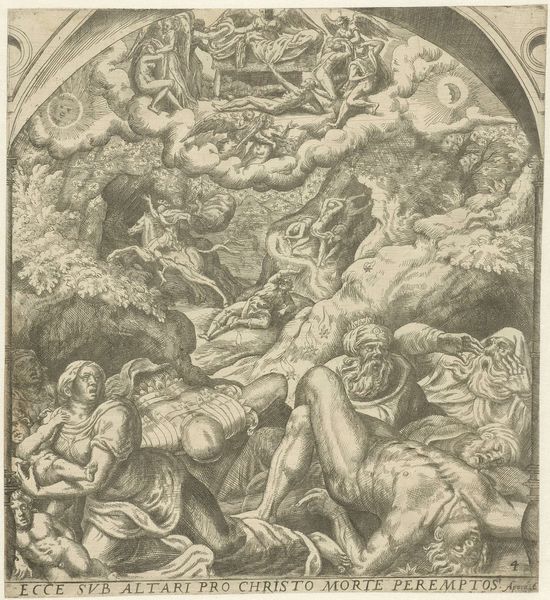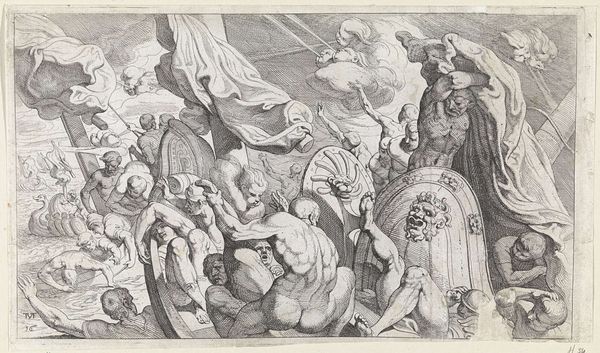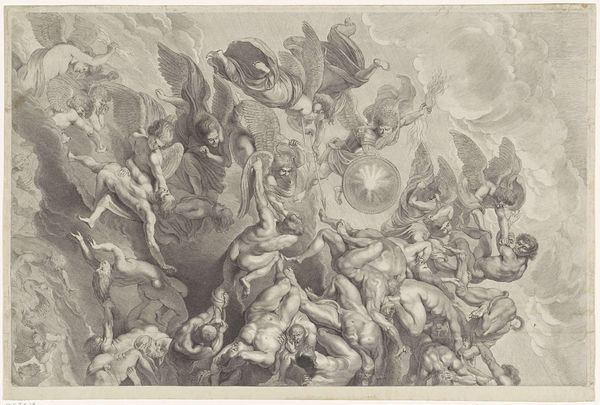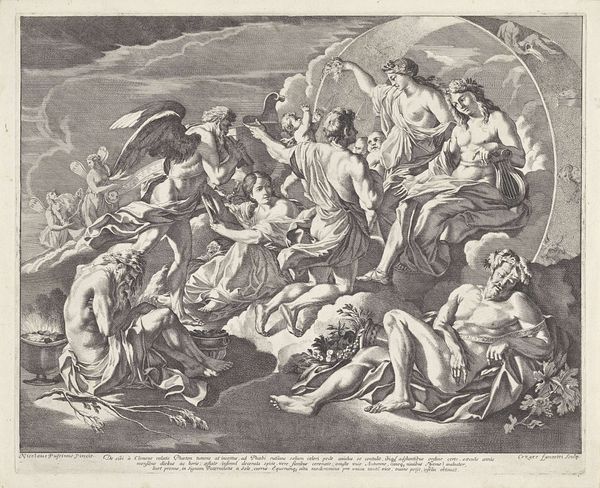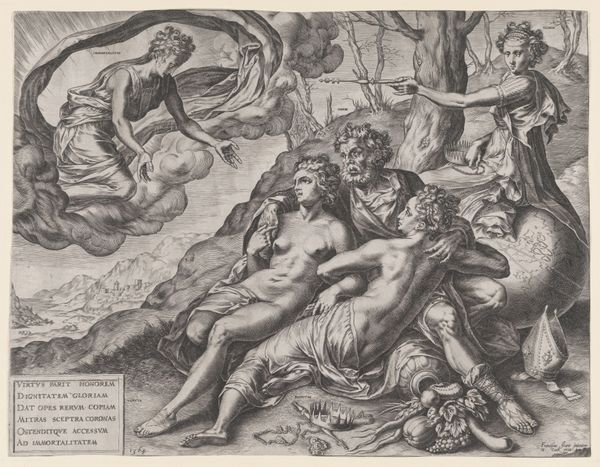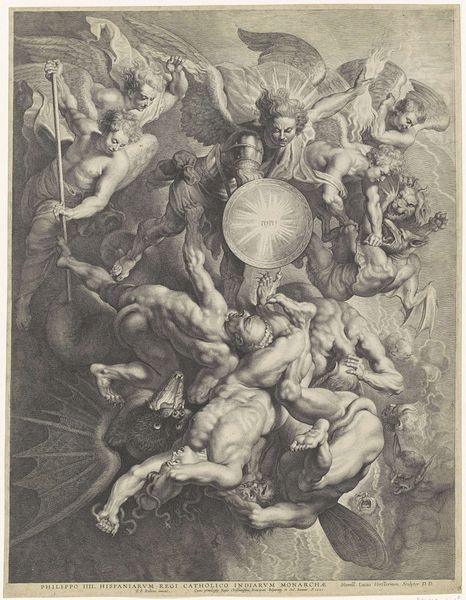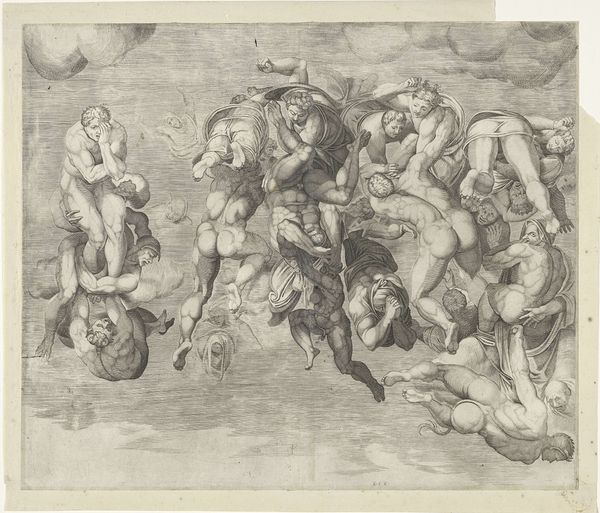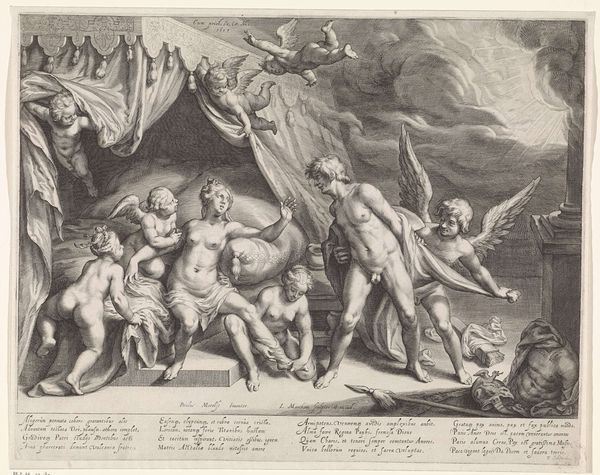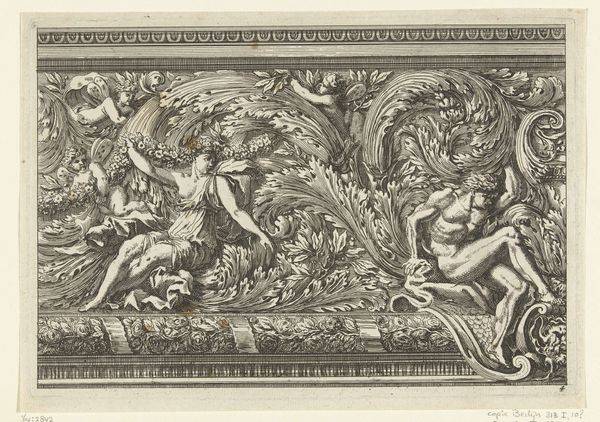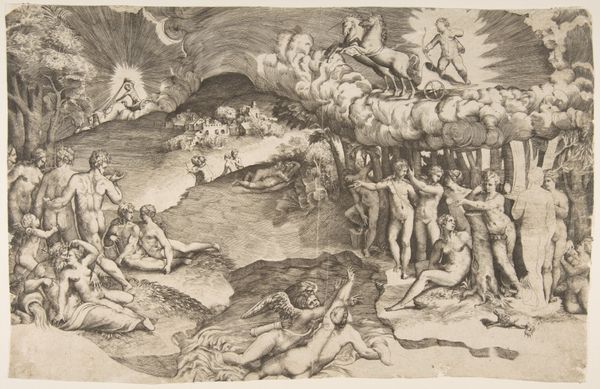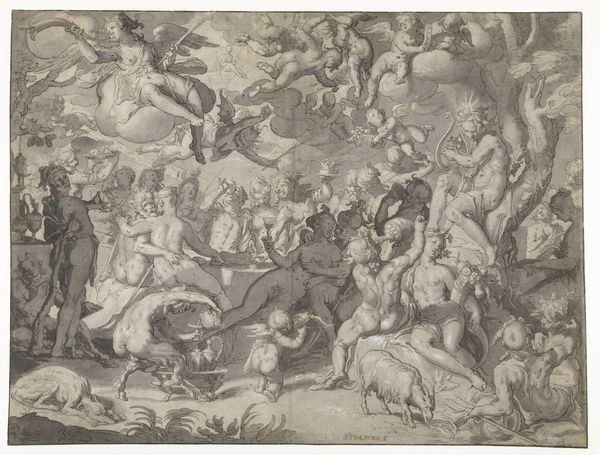
Allegorisch ruiterportret van Lodewijk XIV, koning van Frankrijk 1677
0:00
0:00
gerardedelinck
Rijksmuseum
print, engraving
#
allegory
#
baroque
# print
#
history-painting
#
engraving
Dimensions: height 582 mm, width 765 mm
Copyright: Rijks Museum: Open Domain
Curator: This is "Allegorisch ruiterportret van Lodewijk XIV, koning van Frankrijk," or "Allegorical Equestrian Portrait of Louis XIV, King of France," created around 1677. It is an engraving by Gérard Edelinck, and we're fortunate to have a copy here at the Rijksmuseum. Editor: Wow, intense. The swirling composition, the chiaroscuro... It feels dramatic and chaotic, even a bit violent. What’s going on here? Curator: Well, Edelinck, working in the Baroque style, produced this print, not as an independent artwork but rather to accompany and celebrate significant historical and political events during the reign of Louis XIV. He took on the role of image maker that was determined by a whole production apparatus. Editor: So it was meant to function as propaganda? The positioning of the figures seems… purposeful, loaded with symbolism, perhaps. Curator: Exactly. Edelinck skillfully combined historical and allegorical elements to amplify Louis XIV's image. By mastering printmaking techniques like engraving, he made political messaging and propaganda easily accessible. Editor: I see mythological figures—giants and dragons, being overthrown or restrained. Are those meant to represent enemies of the King? The compositional elements seem deliberately arranged. Curator: It is believed that is its purpose. The imagery relates to Louis XIV’s military successes and embodies ideals of power and divine right, but through this lens, the piece operates less as an objective history and more as a piece within the historical, cultural, and material circumstances that prompted its creation and reception. The making of such prints supported industries such as the publication and art sales sector. Editor: The interplay between darkness and light also makes this feel less like a simple portrait and more like a complex statement. Thinking about Edelinck's intentions—balancing artistry and political function—certainly adds depth to understanding this Baroque work. Curator: Indeed, by studying this print, we reveal aspects about how labor was ordered and employed. What we perceive is the sum result of practices of art making, as well as of print manufacture. Editor: Seeing it through both a formal and material lens offers such a complete, layered picture. Thanks.
Comments
No comments
Be the first to comment and join the conversation on the ultimate creative platform.

